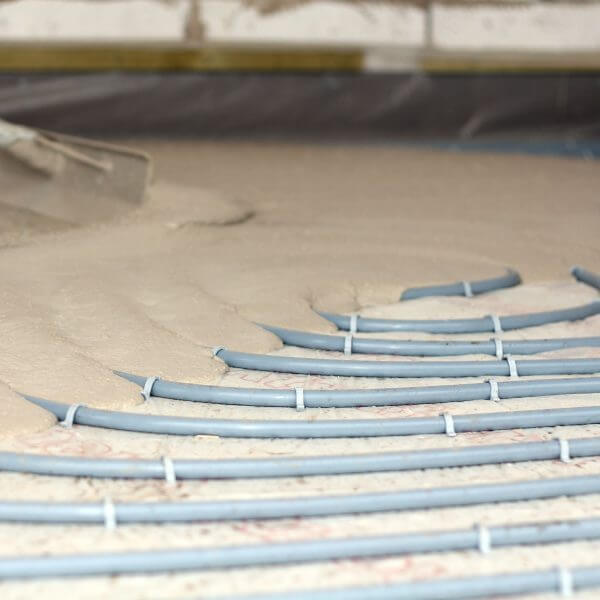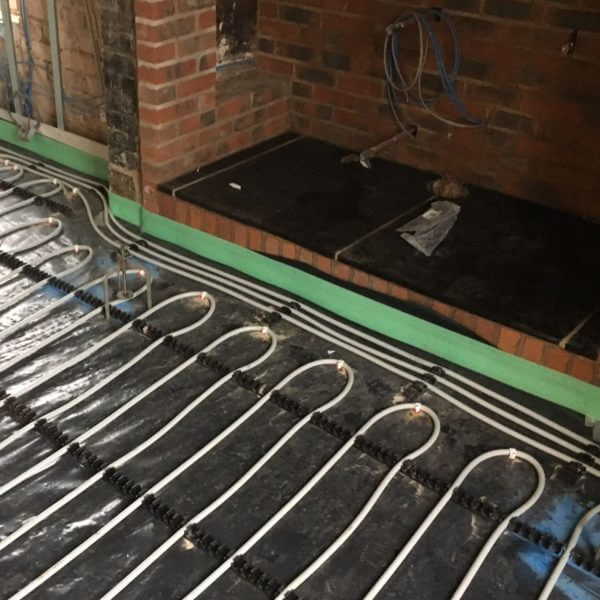Can you Install Underfloor Heating in a Listed Building?
If you own a listed building, you already know that you’re subject to special conditions whenever you want to make changes or improvements to it. Whenever you want to carry out work that may affect the property’s “historic character”, consent has to be gained from your local council.
Underfloor heating is one of those improvements that requires prior consent. Depending on the architecture, it can be quite tricky to install, but that doesn’t make it impossible to bring the benefits of underfloor heating in a listed building.
At EasyFlow we’ve installed heating in many historic properties of various types, and can do the same for you if you have the right conditions. Read on, and see what your prospects of getting an underfloor heating installer approved are. If you need any more information, call us for advice and a no-obligation consultation.
Why Install Underfloor Heating in a Listed Building?
One of the biggest downsides of living in historical properties is that they are expensive to heat. The average energy efficiency rating (EPC) for a listed building is around D-E, and this can be difficult to improve if the majority of work may disturb the historic nature of the property.
The benefits of underfloor heating in a listed building is that it is a very energy-efficient method of heating, minimising heat loss and making the building feel warmer overall. More efficient heating can also have the benefit of preventing damp and condensation in buildings with timber elements.
Historic buildings prefer stable conditions and abhor temperature fluctuations. With underfloor heating, the temperature is distributed more evenly across the building.
Will underfloor heating help with damp?
Yes! One of the top benefits of underfloor heating is that it heats rooms evenly, reducing damp build-up. An underfloor heating installer can also install damp-proof membranes to prevent damp buildup.
Potential Complications With Listed Properties
An expert opinion from an underfloor heating installer is essential to know if your listed building can have underfloor heating for wooden flooring. You may also want to consult an architect or surveyor experienced with your type of building to verify that it can take the additional weight.
The majority of listed buildings were built before the 1900s, before the mainstream application of modern underfloor heating. Many of these properties were designed to be heated by fireplaces, and their architects never considered that a series of pipes across the floor could heat them. It can be tricky to lay down wet central heating pipes in areas of different elevations or through narrowly designed corridors.
That said, properties with suspended timber floors are not necessarily a problem, as we can install a special underfloor heating for wooden flooring setup between the joists. This can be a very optimal way to install heating, providing that the floorboards and joists are in good condition.
We can also install heating that runs on top of the floor, encased in a layer of insulation and levelling compound. This is less invasive, but may not be suitable for properties where the floor timber requires frequent maintenance.
Explore Underfloor Heating Options
Factors That May Affect Listed Building Approval
Believe it or not, the same house with the same plan for underfloor heating could have listed building consent approved or rejected, thanks to a variety of factors. These are as follows;
The Building’s Listed Grade and Protected Elements
A Grade I building is one of exceptional interest and of highest priority to preserve. Buildings in this tier have many unique aspects which contribute to the special interest of the house. This can include the method used to heat the property and the flooring. It can be much harder to gain consent for underfloor heating for wooden flooring as a result.
Grade II covers buildings of special interest, and over 90% of listed properties are in this category. Grade II isn’t exclusive to buildings built before the 1800s, and can include buildings owned by important figures, and even include fairly modern buildings, like non-standard constructions (e.g. BISF houses). These properties will be rich in British culture, but will have less strictly protected elements, making consent for significant alterations easier to obtain.
Grade II* means an important house of special interest. This category is more of a bridge between Grade I and Grade II. It essentially acts like a Grade II, but often lists more protected elements of the building than a typical Grade II.
The Local Council
The biggest factor in gaining consent is the mindset of people responsible for approving consent applications. Some councils are stricter than others when it comes to alterations, or are more lenient towards changes that would improve energy efficiency.
The Materials Provided in the Application
Having a well-made plan of works and the right people by your side beforehand is incredibly beneficial towards the success of a listed building application. Councils are more likely to approve your underfloor heating installer’s work if you have shown you have taken great care towards the building in your decision-making.
What Can Help Approve Listed Building Consent for Underfloor Heating?
Any application has to give details of a plan and other supplemental materials. A site plan, location plan, heritage statement, and design & access statement are normally required. It is in these materials that you have to argue that you have planned these works carefully and have taken the heritage of the building into account.
- The following could improve your chances of getting your consent application approved:
- Plan drawings from architects experienced with the building type.
- A report from a chartered building surveyor regarding the proposed work
- The underfloor heating design, showing accurate manifold placement and pipe layout.
- We can design and provide accurate CAD drawings of the proposed layout.
- Material demonstrating your effort towards the preservation of protected features if it may be affected by building works.
At EasyFlow, our underfloor heating installers make and strictly adhere to a design made using CAD software. In addition, we use accurate calculations to show the operational efficiency of the setup.
Whether you need expert advice for your listed building, or have the approval to have underfloor heating installed, EasyFlow should be your go-to for high-quality installations in older properties. Arrange your no-obligation consultation at your earliest convenience.




Where To Find Us